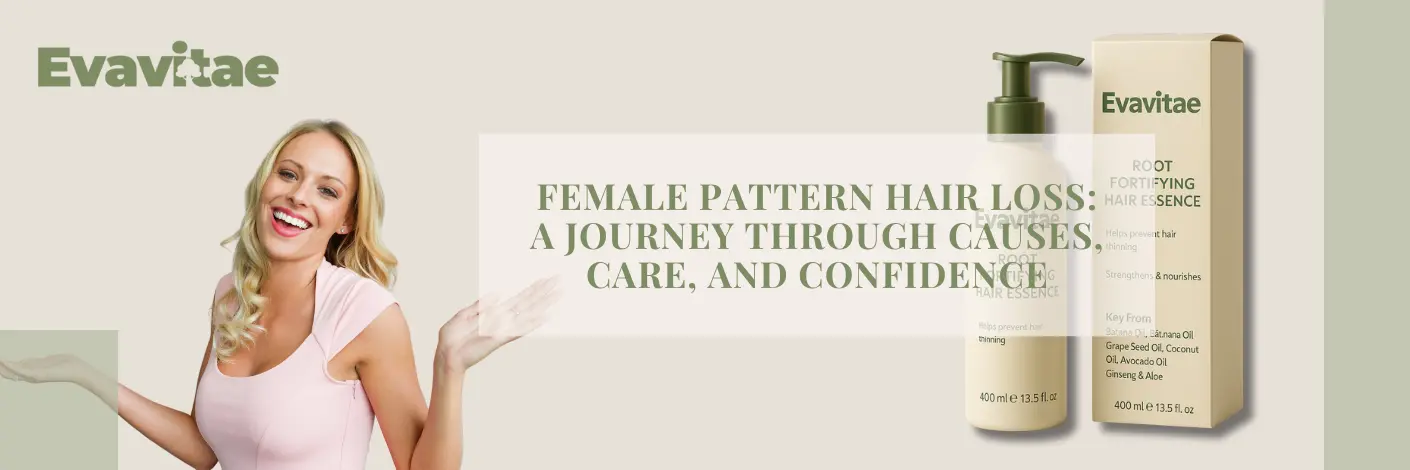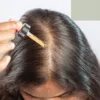A Personal Beginning
Imagine brushing your hair in the morning and noticing the part in your hairline slowly widening over time. It’s subtle at first, almost invisible to others, but to you it feels glaring. This is the quiet way female pattern hair loss often starts. Unlike the sudden shedding triggered by stress or illness, FPHL is gradual, weaving itself into daily life until it can no longer be ignored.
Women across all cultures share this experience, and for many, it can feel isolating. Yet, FPHL is far more common than most people realize, with millions of women worldwide managing its effects every day.
Why Does Female Pattern Hair Loss Happen?
The science behind FPHL is both complex and straightforward. At its core, it is influenced by genetics and hormonal sensitivity. Women who inherit certain genetic markers may find their follicles respond differently to androgens, the so-called “male hormones” that women also produce.
Among the hormonal factors influencing female pattern hair loss, thyroid function plays a surprisingly central role. You can learn more in this article about thyroid hair loss and how to restore balance through holistic approaches.
Over time, these follicles shrink, producing finer, shorter strands until growth slows dramatically (Norwood & Messenger, 2020). Life stages like menopause, pregnancy, or conditions such as polycystic ovary syndrome (PCOS) can accelerate this process.
But FPHL isn’t just about biology. Nutrition, lifestyle habits, and general health can all affect how quickly thinning becomes visible.
The Emotional Layer
Hair is often tied to femininity and identity, and losing it can create more than cosmetic concerns. Women frequently describe feelings of embarrassment, reduced confidence, or even anxiety about social interactions. Researchers have noted the psychological impact of alopecia can be profound, sometimes greater than the physical symptoms themselves (Hunt & McHale, 2005).
Talking openly about these struggles matters. When women realize they are not alone, the burden feels lighter, and seeking help becomes less intimidating.
What Science Says About Management
Medical Options
- Minoxidil: Currently the most widely recommended topical treatment for female pattern hair loss, shown to stimulate follicles when used consistently (Blume-Peytavi & Tosti, 2016).
- Hormonal Treatments: In select cases, doctors may prescribe anti-androgen therapies, though they require careful monitoring.
- Correcting Deficiencies: Low levels of iron, vitamin D, or biotin have all been associated with worsened hair thinning (Almohanna et al., 2019).
Supportive Daily Care
A medical approach is only one part of the puzzle. The other is consistent, gentle care. Shampoos free of sulfates and harsh additives(Evavitae shampoo), nutrient-rich masks(Evavitae hair masks), and scalp massages can create a healthier environment for regrowth. Over time, these habits reduce breakage and improve overall scalp comfort.
At Evavitae, we believe in combining science with nature, offering products that are safe, hormone-free, and designed for sensitive scalps. The philosophy is simple: consistent, transparent care that nurtures both hair and confidence.
💡 Curious about causes and recovery paths for hair loss? Read more in our Hair Loss 101 Hub.
Lifestyle Matters
- Diet: Omega-3 fatty acids, zinc, and antioxidants from whole foods nourish the follicle environment (Harvard T.H. Chan School of Public Health, 2023).
- Stress: Chronic stress disrupts the natural growth cycle. Stress-reducing activities like yoga or daily walks can provide indirect benefits.
- Styling Choices: Minimizing heat styling or chemical treatments prevents fragile hair from breaking further.
Looking Beyond Hair
Managing female pattern hair loss is about more than strands—it’s about self-esteem, patience, and long-term commitment. Progress is slow and sometimes subtle, but with consistent strategies, many women report visible improvement and, just as importantly, renewed confidence.
Beyond pattern thinning, many women face additional contributors that shape their hair journey. For a wider view of related triggers and care options, explore our in-depth overview of female hair loss causes and gentle care strategies.
Conclusion
Female pattern hair loss is not a battle to be fought in silence. It is a journey shared by millions, grounded in biology but felt deeply in everyday life. Science offers effective options, gentle care offers comfort, and community offers strength. By blending these elements, women can reclaim not only healthier hair but also their sense of self.
Visit our Postpartum Hair Regrowth Center to explore safe, gentle ways to support new hair growth.
References (APA Format)
Almohanna, H. M., Ahmed, A. A., Tsatalis, J. P., & Tosti, A. (2019). The role of vitamins and minerals in hair loss: A review. Dermatology and Therapy, 9(1), 51–70. https://doi.org/10.1007/s13555-018-0278-6
Blume-Peytavi, U., & Tosti, A. (2016). Treatments for female pattern hair loss. Journal of the American Academy of Dermatology, 75(1), 19–29. https://doi.org/10.1016/j.jaad.2015.12.038
Harvard T.H. Chan School of Public Health. (2023). The Nutrition Source: Healthy eating plate. Retrieved from https://www.hsph.harvard.edu/nutritionsource/
Hunt, N., & McHale, S. (2005). The psychological impact of alopecia. BMJ, 331(7522), 951–953. https://doi.org/10.1136/bmj.331.7522.951
Norwood, O. T., & Messenger, A. G. (2020). Female pattern hair loss: Current perspectives. Clinical, Cosmetic and Investigational Dermatology, 13, 181–189. https://doi.org/10.2147/CCID.S230417
Evavitae products are now available exclusively at www.evavitae.com.





Add comment
You must be logged in to post a comment.